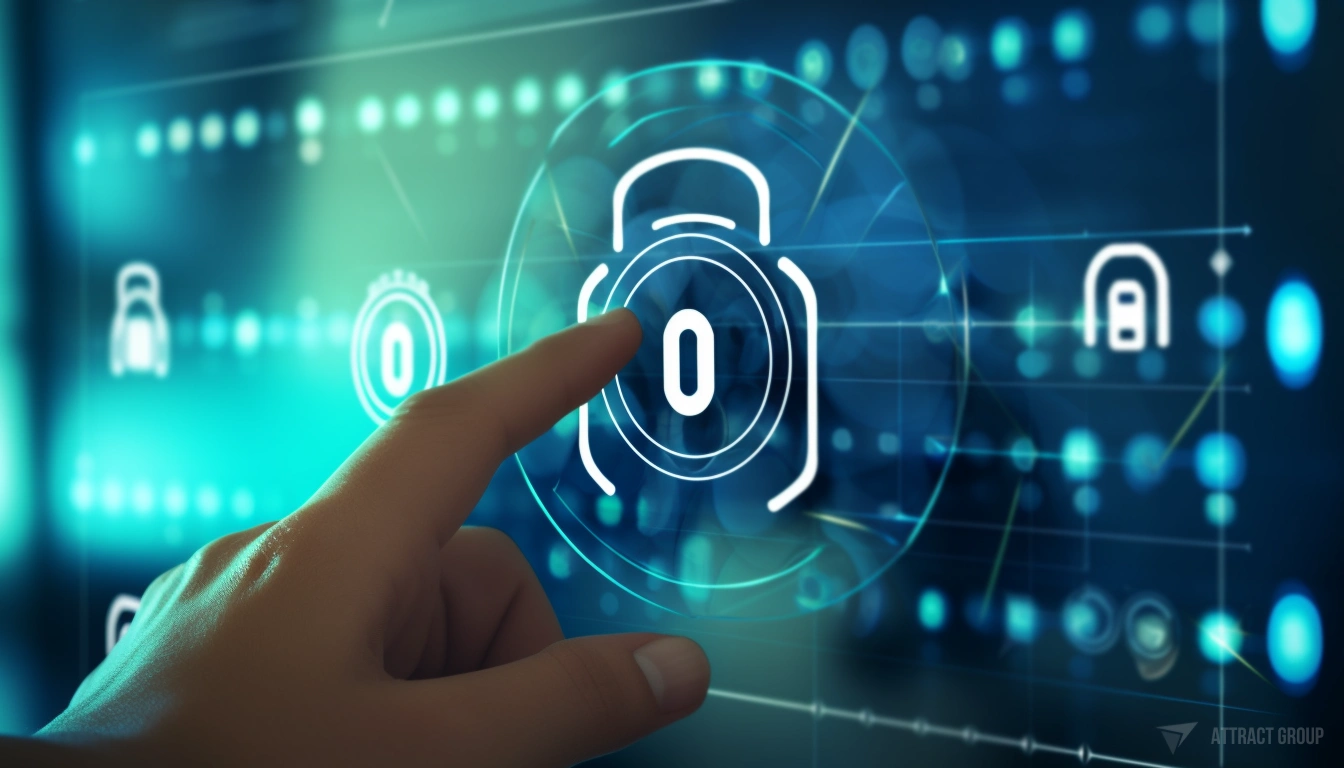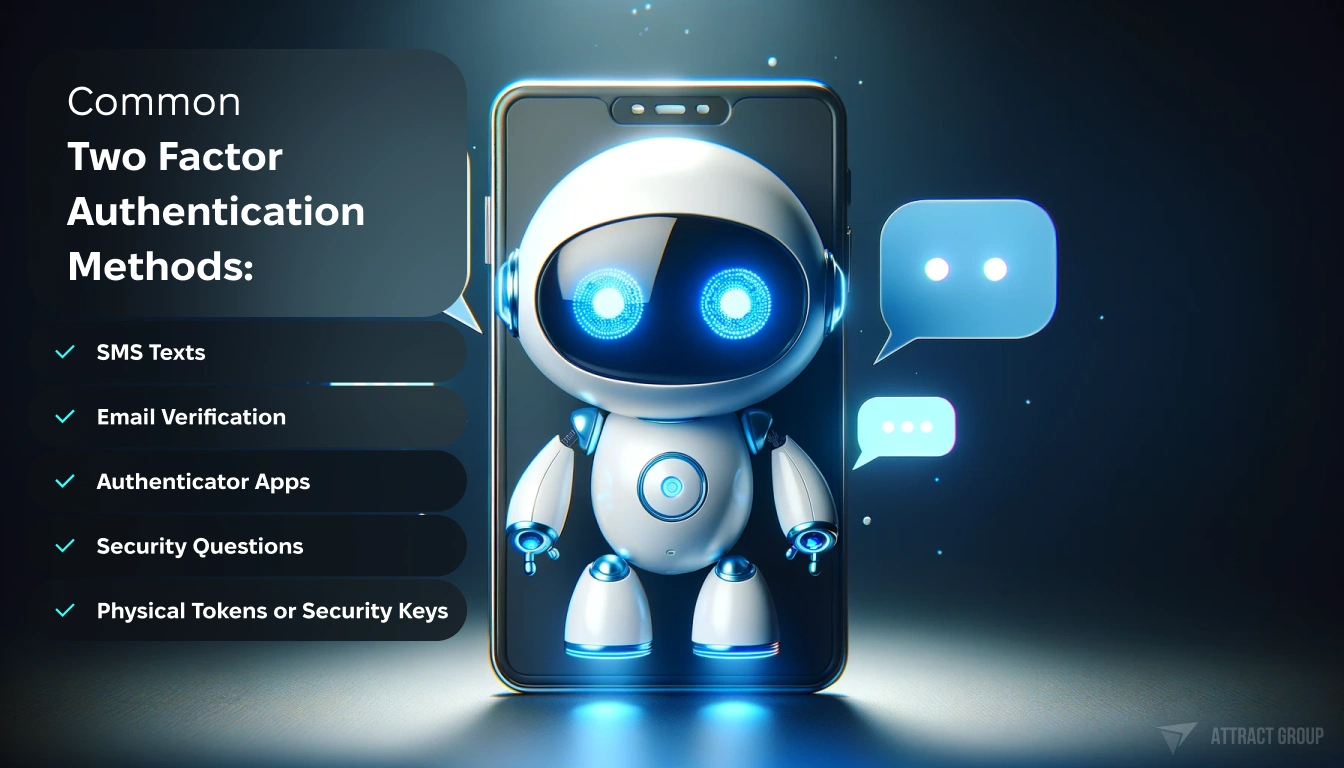2FA vs MFA: Understanding Key Differences
 8 February 2024
8 February 2024? Listen to the Summary of this article in Audio
As digital security continues to climb the priority ladder for organizations globally, deciphering the landscape of authentication methods has never been more crucial. With an uptick in cyber threats, understanding the difference between two factor authentication and multi factor authentication is key to fortifying defenses. While the terms may appear interchangeable at first glance, the granularity between two factor authentication vs multi factor authentication (2FA vs MFA) reveals a narrative of evolving security protocols.
At its core, 2FA requires two different pieces of evidence to affirm user identity, whereas MFA extends that requirement, leveraging a diverse amalgamation of security layers. This equates to 2FA being a subset of the broader MFA category. Such distinctions are pivotal, as they inform the design and implementation of security mechanisms within an enterprise framework. To delve into this further, let’s compare two factor authentication and multi factor authentication and assess how each operates under the pressure of the cyber-secure demands of today’s digital ecosystem.
Key Takeaways
- 2FA utilizes two distinct forms of verification, while MFA may integrate two or more, including biometric data.
- Understanding 2FA vs MFA is essential for organizations aiming to bolster their cybersecurity posture.
- The choice between the two should find equilibrium between enhanced security needs and user experience.
- Comparing two factor authentication and multi factor authentication uncovers nuances that affect their respective efficacy.
- Both 2FA and MFA are superior to single-factor methods, but MFA offers the highest level of security due to multiple checkpoints.
- Adopting the appropriate authentication strategy is dependent on various organizational factors, including the risk landscape and regulatory requirements.
- Real-world application and adaptation to emerging threats play a pivotal role in deciding between 2FA and MFA.
The Growing Need for Enhanced Authentication Methods
In the age of digital transformation, the security landscape is rapidly evolving, and so too must our cybersecurity strategies. The overwhelming increase in password leaks and the alarming frequency of cyber incidents are testament to the urgent necessity for more sophisticated authentication measures. This pressing concern addresses the core vulnerabilities inherent in outdated security practices and highlights the importance of adopting robust and secure login methods to protect user credentials and sensitive data from the predatory realms of the dark web.

Statistics on Password Leaks and Cyber Threats
The statistics are staggering; with over 33 billion passwords leaked to date, the magnitude of cyber threats facing enterprises and individual users alike is unprecedented. These figures serve as a stark reminder that traditional Single Factor Authentication (SFA) systems, which typically rely on mere passwords, are no longer adequate for safeguarding digital assets against sophisticated cyber-attacks.
Single Factor Authentication: A Vulnerable Outdated Practice
It’s no surprise that SFA, with its single layer of defense, has become the weakest link in the cybersecurity chain. The practice of using a solitary password — a trait all too easily guessed, stolen, or exposed — renders user accounts especially susceptible to breaches, making secure login methods like 2FA and MFA not a luxury, but a critical necessity.
User Credentials and the Dark Web
The ill-famed dark web continues to flourish as a hotbed for the trade of exposed passwords and user credentials, bolstering the black market economy and enabling malfeasance to thrive. Such rampant exposure of sensitive information underscores an imperative need for businesses and consumers to elevate their defensive protocols beyond the scope of conventional passwords and implement more secure authentication solutions designed to thwart these threats.
Indeed, as we endeavor to outpace the adversaries who exploit password leaks, the adoption and understanding of sophisticated authentication techniques such as Two Factor Authentication (2FA) and Multi Factor Authentication (MFA) have become indispensable in the pursuit of cybersecurity excellence.
Partner with our cybersecurity experts to implement a customized multi-factor authentication solution tailored to your organization’s needs.
2FA Explained: A Two-Pronged Protective Approach
As digital security evolves, technologies like two-factor authentication (2FA) have surged in importance. The foundation of 2FA rests on combining two distinct elements to establish user identity, thereby solidifying the security posture of online accounts and systems. This synergy of verification types shapes a formidable barrier against cyber incursions, requiring more than just the knowledge of a password to gain entry.
The Dual Components of Two-Factor Authentication
Central to comprehending what is two-factor authentication is the recognition that two different types of credentials must be presented by a user. First is something the user knows, typically a password, PIN, or an answer to a security question. The second is something the user physically possesses, such as a mobile device, a security token, or a smart card, which can verify the user’s identity with a unique code or signal. This alliance of knowledge and possession effectively raises the difficulty for unauthorized entities attempting to access secure data.
Common Two-Factor Authentication Methods

Two-factor authentication methods are diverse, each with unique merits to suit different security needs and preferences. The most prevalent techniques include:
- SMS Texts: Sending a one-time passcode (OTP) to a user’s mobile phone.
- Email Verification: Transmitting an OTP or link to the user’s registered email.
- Authenticator Apps: These generate temporary codes on devices, known for their enhanced security compared to SMS.
- Security Questions: Personal questions that produce a secondary knowledge-based layer.
- Physical Tokens or Security Keys: Hardware devices that provide digital authentication independently of user input.
For a visual summary of these methods, consider the following table:
| Method | Description | Common Usage |
|---|---|---|
| SMS Texts | OTP sent to mobile phone | Personal and corporate accounts |
| Email Verification | OTP or verification link emailed | Online services login |
| Authenticator Apps | App-based code generators | Preferred for high-security environments |
| Security Questions | Predefined personal questions | Account recovery processes |
| Physical Tokens/Security Keys | Hardware for digital authentication | Enterprise-level user access |
Each two factor authentication explained above provides an actionable insight into how to secure login methods effectively and robustly, forming a tailored defense against the risks lurking within today’s digital landscape.
Multi Factor Authentication: A Fortified Security Strategy
The current digital era demands sophisticated defenses against escalating security threats, emphasizing the critical role of multi factor authentication (MFA) in protecting sensitive data. Multi factor authentication methods, involving the use of two or more security evidences, have proven to be a bulwark against identity theft and unauthorized account access. By requiring multiple forms of verification, MFA ensures a sturdy line of defense for organizations striving to maintain secure login methods in the face of relentless cyber assaults.
Multi factor authentication overview suggests that it operates on the principle that the identity of a user is verified by presenting several independent credentials. These credentials fall into various categories: something you know, something you have, and something you are. These categories combine to create a multifaceted security framework that adds layers of complexity for any potential intruder trying to penetrate a secure environment.
Implementing MFA offers numerous MFA advantages to an organization’s security apparatus. To highlight the effectiveness of these various authentication factors, let’s explore each category in detail:
- Knowledge Factors: These involve information that should be exclusive to the user, like passwords and PINs. While this information can be compromised, it serves as the first line of defence in the MFA strategy.
- Possession Factors: These could include a mobile device, a security token, or a smart card that an attacker would find difficult to physically obtain or duplicate.
- Inherence Factors: Biometric verifications, such as fingerprint scans and facial recognition, provide a high level of security due to their intrinsic link to the individual user.
The power of MFA lies in its flexibility and the diversity of authentication methods it incorporates, thus ensuring that even if one factor is compromised, others stand guard to prevent unauthorized access. To elucidate the extent and strength of MFA, consider the following table showcasing different types:
| Factor Category | Examples | Security Level |
|---|---|---|
| Knowledge | Passwords, PINs, Security Questions | Basic |
| Possession | Mobile Devices, Hardware Tokens | Intermediate |
| Inherence | Fingerprints, Facial Recognition | Advanced |
Implementing such a robust authentication system serves not just to protect organizations from prevalent threats, but also to construct a foundation that can evolve and adapt to future security challenges. MFA’s advantages are clear, combining different factors that independently may be vulnerable, but together, create an almost impregnable security shield.
Ultimately, in a world where cyber threats mutate and evolve rapidly, incorporating MFA within the security profile of any organization becomes not only strategic but necessary. The architecture of multi factor authentication not only impedes unauthorized users but also acts as a crucial component in an overarching data protection strategy, assuring that sensitive information remains within the fortified confines of MFA’s complex verification matrix.
Two Factor Authentication vs Multi Factor Authentication: Dissecting the Distinction
With data breaches and cybercrimes on the rise, securing sensitive digital information has become paramount. In this technological arms race, two factor vs multi factor authentication is at the forefront of cybersecurity debates. But what sets them apart and how do they stack up against each other in a multi factor authentication comparison and two factor authentication comparison? Let’s examine the key differences to comprehend their roles in enhancing digital security.
The essence of two factor authentication (2FA) lies in its simplicity and effectiveness. By definition, 2FA enhances security by combining two different verification checkpoints – typically, something the user knows (like a password) and something the user has (such as a mobile device for a one-time passcode). Recognized for its 2fa benefits, this method significantly lowers the risk of unauthorized access due to its dual-layered approach.

Conversely, multi factor authentication (MFA) includes 2FA’s foundational principle but extends further, calling upon a broader array of security measures. MFA takes the concept of layered defense to the next level by employing two or more independent credentials. These layers might encompass not just passwords and codes, but also biometric verification, like fingerprints or facial recognition, and physical tokens. The mfa advantages are apparent as they provide a more comprehensive security model, adapting across a diverse landscape of potential cyber threats.
| Authentication Type | Number of Factors | Verification Methods | Security Level |
|---|---|---|---|
| Two Factor Authentication (2FA) | Two | Password & OTP/Security Token | Enhanced |
| Multi Factor Authentication (MFA) | Two or More | Password, OTP, Security Token, Biometrics, etc. | Superior |
While dissecting two factor vs multi factor authentication, it is crucial to understand that though 2FA is encompassed within the MFA umbrella due to its use of multiple credentials, MFA is not restricted to just two and can include several factors. This factorial abundance grants MFA a heightened ability to protect against cyber threats, making it ideal for situations that demand stringent security measures and compliance with rigorous industry standards.
Ultimately, the decision between adopting 2FA or MFA should hinge on various considerations, including the level of security requisite, user convenience, and potential impact on operational efficiency. Regardless of choice, the implementation of either 2FA or MFA marks a significant leap forward from single-factor methods and is a testament to the ongoing evolution of cybersecurity protocols in the digital age.
Advantages and Limitations of 2FA and MFA
Delving into the realm of authentication, it’s essential to recognize both the strengths and constraints that two-factor (2FA) and multi-factor (MFA) authentication methods offer. While they share a common goal of elevating security protocols, distinct characteristics of each approach cater to various cybersecurity and compliance needs. In this section, we shall unpack the tangible benefits and inevitable limitations that accompany these authentication strategies, providing insight into how they serve the overarching objective of enhanced cybersecurity.
Benefits of Two Factor Authentication
Two Factor Authentication, standing as a cornerstone of user access management, offers substantial protection in a digital space where vulnerabilities are ever-present. Its benefits are manifold, rooted in its dual-verification mechanism which significantly fortifies user accounts. Here, we articulate the multidimensional advantages that 2FA procures:
- Substantially reduces the incidence of unauthorized access, as attackers are unlikely to possess the second authentication factor.
- Provides an added security layer without extensive infrastructural overhaul, making it a cost-effective upgrade from Single Factor Authentication.
- Enhances user confidence in security practices, bolstering the reputation of organizations that prioritize data protection.
By mandating a secondary form of verification, 2FA serves as a vital deterrent against the prevalent threat of compromised credentials, striking a balance between accessibility and security that adheres to necessary security compliance standards.
Why Opt for Multi Factor Authentication?
For entities in pursuit of advanced security measures, Multi Factor Authentication presents itself as an indispensable tool. MFA’s strengths lie in its layered security strategy, merging multiple authentication components to form a highly secure user verification process. Consider the merits of MFA in promoting enhanced cybersecurity:
- Thoroughly dissipates authentication factors, requiring threat actors to breach multiple security checkpoints.
- Adapts to a spectrum of security risks by allowing the integration of biometrics and hardware tokens, tailoring to specific security requisites.
- Assists organizations in meeting stringent regulatory compliance demands, a critical aspect of corporate governance and risk management.
With MFA, the advantages of multi factor authentication extend beyond mere enhanced user verification. They encapsulate an evolved defense mechanism that can be calibrated to the organization’s unique security posture, reinforcing the nexus of trust between technology and user.
Mitigating Risks with Multiple Security Layers
The essence of cybersecurity is rooted in its dynamic and preemptive nature; hence the implementation of 2FA or MFA serves as a pivotal step in the mitigation of data breach risks. A pragmatic application of these methods aligns security endeavors with the objective of enforcing robust user access management, woven into the fabric of an organization’s operative paradigm.
| Authentication Method | Strengths | Limitations |
|---|---|---|
| Two Factor Authentication (2FA) | Improved security over SFA, efficient implementation, cost-effective for users and enterprises | Potential vulnerability if second factor (like SMS) is intercepted, dependent on user adherence to process |
| Multi Factor Authentication (MFA) | Robust security through multiple verifications, customizable for various risk profiles, supports security compliance requirements | May introduce complexity affecting user experience, requires thoughtful implementation to avoid productivity disruptions |
It is clear that while the benefits of two factor authentication serve as a significant upgrade to traditional security protocols, the vast landscape of threats we face today often calls for the robust and versatile defenses that MFA can provide. A judicious application of these methods is fundamental in actualizing a secure yet user-friendly digital environment.
Our cybersecurity professionals can assess your infrastructure and recommend the most suitable authentication solution.
Secure Login Methods: Implementing Effective Authentication
In an age where digital defenses are paramount, implementing two factor authentication (2FA) and implementing multi factor authentication (MFA) are vital to enhancing organization cybersecurity. As businesses continue to face an onslaught of cyber threats, establishing secure login practices has become critical. This extends beyond merely selecting a security measure — it must integrate seamlessly with an organization’s existing workflow and digital infrastructure.

Challenges in Modern Access Management
When it comes to access management, contemporary challenges are multifaceted. Organizations must navigate a terrain where threats evolve and user needs fluctuate. Ensuring that the authentication process is reliable, user-friendly, and efficient without compromising on security is a delicate balance to achieve. This is where the nuanced strategies of implementing reliable authentication protocols come to play.
User Convenience Versus Security Considerations
The dichotomy between user convenience and stringent security can often put organizations in a dilemma — how to strengthen authentication processes without encumbering the end-user. Striking a balance requires executive oversight and a strategic approach to workflow design. System designers and IT administrators must ask, “Are we enhancing security at the expense of user experience? And if so, what can we modify to alleviate user friction while not diluting our cybersecurity efforts?”
When deciding between 2FA and MFA, it is imperative to consider both the intensity of security needed and the potential impact on day-to-day operations. The choice should effectively align with the company culture, operational requirements, and be mindful of the human factor inherent in security protocols.
In a remote or hybrid work environment, the imperatives for secure access are accentuated. Employees across diverse locations accessing sensitive data merit a rigorous yet flexible authentication system. Below is a comparative table that illustrates the interplay between security measures and user impact, helping to guide decision-makers in selecting the proper authentication approach for their organization:
| Authentication Method | User Impact | Security Level | Cost-Effectiveness | Suitability for Remote Work |
|---|---|---|---|---|
| Two Factor Authentication (2FA) | Minimal training required | Enhanced | High | Good |
| Multi Factor Authentication (MFA) | May require user adaptation | Superior | Moderate to High | Excellent |
The comparative analysis underscores the importance of assessing both the method’s integration into the current infrastructural framework and its end-user viability. As organizations transition towards decentralized workforces, the aptitude of an authentication method to conform to these dynamic environments is crucial. Implementing effective authentication thereby is not just about security; it’s about ensuring that the secured environment is conducive to productivity and business continuity.
Let our IT consultants help you implement efficient 2FA or advanced MFA tailored to your organization’s security needs.
Best Practices for Authentication: Balancing Security and Accessibility
Implementing robust authentication methods is fundamental in safeguarding an organization’s digital resources. The best practices for two factor authentication and multi factor authentication centralize on developing a user-centric security framework that harmonizes stringent security measures with ease of access. Effective authentication practices dictate staying ahead of evolving cyber threats while optimizing user experience.
Choosing between two factor authentication and multi factor authentication necessitates a thorough examination of organizational needs and risk assessments. Recognizing the value of user convenience aids in determining an authentication strategy that users will adopt and adhere to. While 2FA offers a significant security enhancement over single-factor methods, MFA provides a much deeper level of security through the addition of more barriers and checkpoints.
Here are the strategic considerations for deploying an effective authentication system:
- Assess the criticality of the data or systems to be protected, as this will drive the need for either 2FA or MFA.
- Consider the potential productivity impact. Over-complicated systems may reduce efficiency or introduce user resistance.
- Factor in user behavior patterns to design an authentication flow that minimizes disruption to routine tasks.
- Ensure that the authentication solution is scalable and adaptable, allowing for seamless integration with new technologies.
- Regularly review and update the authentication methods to keep pace with the dynamic cybersecurity landscape.
To achieve secure access, a careful balance must be struck, considering the following aspects:
| Aspect | Consideration for 2FA | Consideration for MFA |
|---|---|---|
| Security Level | Enhanced by a secondary verification step. | Superior, with multiple layers of security. |
| User Experience | Generally smooth with minimal added complexity. | More secure but may require user adjustment and education. |
| Deployment | Easier and faster to implement organization-wide. | More involved setup; may need infrastructural changes. |
| Cost Implications | Lower initial costs and maintenance. | Higher initial investment with long-term benefits. |
| Future Proofing | May need subsequent updates for evolving threats. | Often incorporates advanced tech and adjusts to new risks. |
Forging an authentication framework that aligns with these best practices will place organizations on the frontline of cybersecurity defense. Furthermore, it will empower users by granting them effective authentication practices that do not impede their productivity. Drawing upon these insights, businesses can ensure their authentication mechanisms are not only robust and secure, but also welcomed by those who rely on them daily.

Conclusion
In the intricate tapestry of cybersecurity, the decisive approach towards user verification methods is of paramount importance. The intricate summary of two factor vs multi factor authentication serves not only as a contemporary benchmark for security but also as a decisive node in an organization’s cybersecurity protocol. To tailor a security framework that positions itself adeptly within the digital realm, the two-factor authentication choice or the multi-factor authentication strategy must be meticulously weighed against the dynamic backdrop of an organization’s environment.
Choosing Between Two Factor and Multi Factor Authentication
The decision matrix for opting between 2FA and MFA hinges on understanding one’s unique digital ecosystem — an intersection where user convenience, enterprise security requisites, and regulatory frameworks converge. For businesses seeking a compromise between heightened security and operational fluidity, 2FA might suffice. However, for those operating within a more vulnerability-sensitive domain or desiring a more granular security topology, MFA emerges as the definitive bulwark against unauthorized intrusions.
Summary of Key Differences
Distilling the essence of the comparison, the imperative difference resides in the depth of defense: 2FA fortifies the gate with two separate locks, while MFA deploys an array of barriers. This crucial difference magnifies in practice, where 2FA can be seen as the agile sentinel; MFA, the vigilant fortress, stands stubborn against a broader spectrum of threats — a quality rendering it indispensable in certain high-stake scenarios.
Future Trends in Authentication Technologies
Looking forward to the horizon of innovation, future authentication technologies forecast a landscape where security synergetically blends with seamless user experience. As we pivot toward a digital future, the security forefront is likely to be graced by biometrics and artificial intelligence — technologies designed not just to resist, but to intelligently adapt and anticipate the ever-morphing threat milieu, further consolidating an organization’s stronghold over its digital sanctum.
Connect with our team to implement multi-factor authentication and take your organization’s security to the next level.
FAQ
What are the key differences between two factor authentication (2FA) and multi factor authentication (MFA)?
The primary difference is in the number of verification factors. 2FA requires two forms of evidence to confirm an individual’s identity, such as something they know (password) and something they have (a phone for a one-time code). MFA requires two or more forms of evidence, including possibly biometric verification, adding layers of security.
Why is there a growing need for enhanced authentication methods?
With the rising number of password leaks and cybersecurity threats, traditional single-factor authentication, which typically includes only a password, has proven to be insufficient and vulnerable, necessitating more secure methods such as 2FA and MFA to protect against unauthorized access.
What is Two Factor Authentication, and how does it work?
Two Factor Authentication adds an extra layer of security to the standard single-factor method of using only a password. With 2FA, users must provide two distinct forms of identification: one they know (like a password) and one they possess (like a smartphone or a hardware token), making unauthorized access more challenging.
What are some common methods of Two Factor Authentication?
Common 2FA methods include SMS text messages with a one-time passcode, authentication mobile apps that generate codes, email-based codes, and physical security devices like tokens or smart cards.
What additional security does Multi Factor Authentication provide?
Multi Factor Authentication enhances security by combining two or more independent credentials: something the user knows (password), something they have (security token), and something they are (biometric data). This diverse combination reduces the risk of security breaches and increases the difficulty for unauthorized users to gain access.
How can implementing 2FA or MFA benefit an organization?
Implementing 2FA or MFA significantly upgrades security by mitigating risks of unauthorized access, providing compliance with security standards, and potentially safeguarding sensitive data. It also instills trust in customers and stakeholders that their data is responsibly protected.
What are some of the challenges in implementing effective authentication methods?
Challenges include ensuring the authentication methods do not significantly impede user convenience or productivity, balancing security needs with ease of use, integrating the methods with existing IT infrastructure, and keeping costs within budget.
What are the best practices for Two Factor and Multi Factor Authentication?
Best practices include conducting a thorough assessment of organizational needs and user behavior, considering user convenience alongside security, preparing for future technology advancements, and continuously monitoring for potential security threats while maintaining an accessible user experience.
How important is usability in selecting an authentication method?
Usability is crucial when selecting an authentication method because overly complex systems can lead to poor user adoption, avoidance of the security measures, or workarounds that could compromise security. A balance must be struck between robust security and user-friendliness to ensure effective protection and high compliance among users.
Will future trends in authentication technologies affect how we choose 2FA and MFA solutions?
Yes, future trends in authentication technologies, such as advancements in biometrics, artificial intelligence and context-aware authentication mechanisms, will likely influence the selection of 2FA and MFA solutions, ensuring they remain effective against evolving cyber threats and integrate seamlessly with new technological ecosystems.









